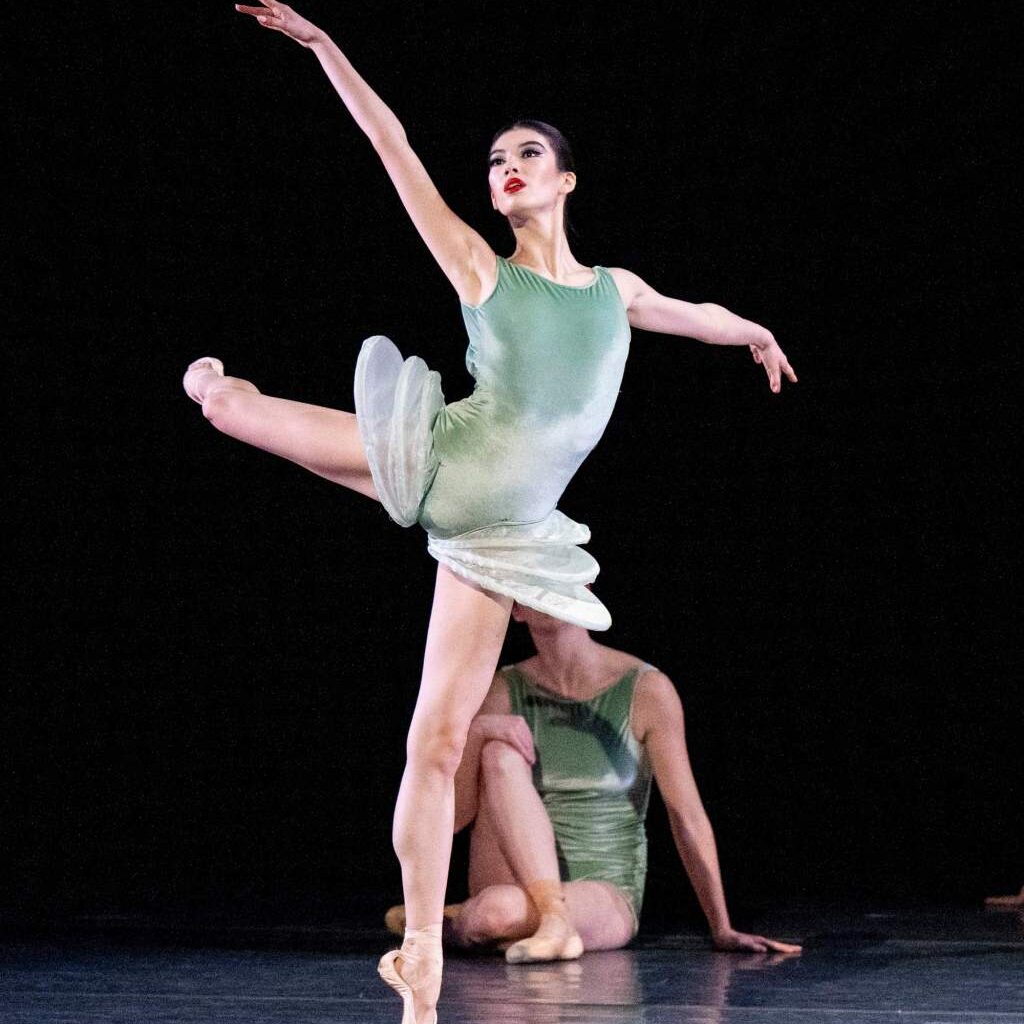Bodies are kinetic, while sounds are resonant — but can’t we have it both ways?
Alonzo King thinks we can. So prepare for an evening of spirited expression and kinetic resonance with the Alonzo King LINES Ballet on Saturday, Nov. 8 at the Carpenter Performing Arts Center.
Merging music and movement into pure transcendence, yet grounded in historical reality, the Alonzo King LINES Ballet has long been a force of transformation in the world of dance.
Founded by Alonzo King in 1982, King’s collaborations — with musicians, writers, and visual artists across cultures — infuse classical form with human depth.
The Saturday evening show at the Carpenter Center will begin with “Ode to Alice Coltrane,” a dance meditation inspired by the composer and harpist’s celestial soundscapes.
Here, King’s choreography channels the spiritual intensity of Coltrane’s groundbreaking album “Journey in Satchidananda” and others.
The program continues with “Ma mère l’Oye,” King’s reimagining of Maurice Ravel’s beloved 1912 “Mother Goose Suite.”
Infused with LINES Ballet’s signature fluidity and emotional clarity, the piece breathes life into Ravel’s impressionistic fairy tale, where innocent wonder collides with modern expression.
With “Ode to Alice Coltrane” and “Ma mère l’Oye,” both recent pieces, King once again blurs the boundaries between the audible and the visible, creating movement that feels like light — flickering, infinite, alive.
Head over to shorturl.at/WfLaU for more info and tickets.
PIEAM
Dan Taulapapa McMullin turns language itself into a living texture in their exhibit “Our Bodies Are Memories of Our Bodies,” on view now at the Pacific Island Ethnic Art Museum until February 2026.
The subtitle of the exhibit is “Siapo ma Solo,” or a combination of traditional Samoan barkcloth abstraction (siapo) and poetry in the Samoan genre and worldview (solo).
In this way, the artist crafts a dialogue between visual rhythm and poetic cadence.
The works in the exhibit move like a tide between mediums, between written and woven meaning.
Indeed, McMullin’s poems are not just printed on cloth, but seem to breathe with it, their English lines carrying the pulse of gagana Sāmoa (the Samoan language), where sound, pattern, and sense are inseparable.
The poems read as visual fields, reminding one of the Concrete Poetry movement where words take on more than what they ‘mean.’
Each phrase is more than a phrase: It’s a shape of vibration, a surface of thought.
If all this seems abstract, remind yourself of the title of the exhibit. Our bodies carry memory within them, each mark on the cloth of our selves a trace of what we have lived — and what we pass on to the next generation.
Indeed, the works in the exhibit embody fa’asamoa, the Samoan understanding that the body is not separate from its environment but a vessel of ancestry and relationship.
For McMullin, a Fa’afafine, non-binary artist and poet from American Samoa, the act of creation is an act of continuity. The works in “Our Bodies Are Memories of Our Bodies” reflect the poetics of a language that moves fluidly between islands and pages, sea and cloth, the living and the ancestral.
For more info, check out pieam.org/exhibits.
Día de los Muertos
The Museum of Latin American Art invites the community to gather once again for its Día de los Muertos Festival, a free, family-friendly celebration honoring memory, resilience, and cultural heritage.
Taking place Sunday, Oct. 26, this year’s theme, resilience, recognizes the endurance of the human spirit and the legacies that live on through those who have gone before us.
From the moment the festival begins at 11 a.m., MOLAA will come alive with music, dance, and the artistry that defines Día de los Muertos.
The Museum of Latin American Art was founded by Dr. Robert Gumbiner in 1996. Today MOLAA is the only museum in the United States dedicated to modern and contemporary Latin American and Latino art, in Long Beach on Wednesday, May 15, 2024. (Photo by Brittany M. Solo, Press-Telegram/SCNG)
Show Caption
1 of 1
The Museum of Latin American Art was founded by Dr. Robert Gumbiner in 1996. Today MOLAA is the only museum in the United States dedicated to modern and contemporary Latin American and Latino art, in Long Beach on Wednesday, May 15, 2024. (Photo by Brittany M. Solo, Press-Telegram/SCNG)
DJ Caveman will set the rhythm for the day, soundtracking the festivities from open to close. At noon, Ballet Folklorico Almitas Mexicanas brings traditional dance to the stage, followed by Cultura Revolución Performing Arts at 2 p.m., with their dynamic blend of folklórico and mariachi performance.
The afternoon features the Catrina/Catrin Contest — a crowd favorite celebrating the iconic imagery of La Calavera Catrina — and wraps with live music from La Nueva Ola de Cumbia at 4:15 p.m.
Beyond the performances, the festival transforms the museum into a space of remembrance and joy, filled with altars and community art activities.
It’s an invitation to honor those who came before us while celebrating the creative traditions that continue to keep us all alive.
Admission is free, but reservations are required.

